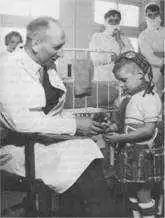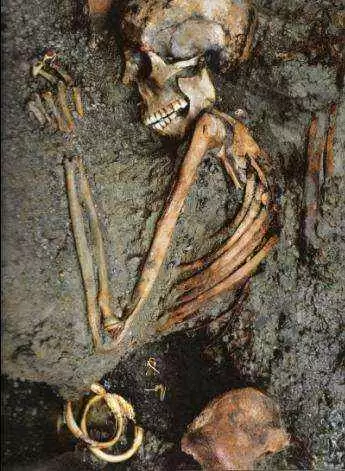
Celiac.com 05/15/2010 - Willem-Karel Dicke was born in 1905, in Dordrecht, Holland, and died Utrecht in 1962. Dicke was a Dutch pediatrician, the first clinician to develop the gluten-free diet, and to prove that certain types of flour cause relapses in celiac disease patients.
From 1922 until 1929, Dicke studied medicine in Leiden. He then specialized in pediatrics in Juliana Children’s Hospital in The Hague from 1929 until 1933. In 1936, at just 31 years of age, he was named medical director of the hospital.
Celiac.com Sponsor (A12):
In the 1940s and 1950s he went on to formally establish the gluten-free diet, forever changing treatment methods and clinical outcomes of children suffering from celiac disease. By 1952, Dicke recognized that the disease is caused by the ingestion of wheat proteins, not carbohydrates.
From the late 1880s into the 1920s and 30s, doctors like R. A. Gibbons, Sidney Haas and others pioneered the use of specialty diets to treat celiac disease. Diets such as the banana diet, the fruit diet, the carbohydrate diet (fruit, puree of potatoes or tomatoes), the beefsteak diet, the milk diet had all been tried, with some success.
In his now seminal 1950 thesis on celiac disease and wheat-free diet, Dicke lays out the results of the detailed dietary study he conducted over several years at the Juliana Children’s Hospital on a patient with celiac disease.
The study likely had its earliest beginnings at the advent of Dicke’s promotion to medical director, if not slightly before. From the testimony of Dicke’s wife in 1991, we know that Dicke was convinced of the beneficial effect of wheat free diet even before 1940. She confirmed that between 1934 and 1936, Dicke began to conduct experiments with wheat free diets confirming Christopher Booth’s comments in The Lancet, Feb 25, 1989:
“It was a young mother’s statement of her celiac child’s rash improving rapidly if she removed bread from the diet that alerted his interest,” when Dicke was a pediatrician in The Hague in 1936.
Dicke published his first report on a wheat-free diet in Het Nederlands Tijdschrift voor Geneeskunde in 1941. (W. K. Dicke: A simple diet for Gee-Herter’s Syndrome). At the time, celiac was still called Gee-Herter’s syndrome. It reads, in part:
“In recent literature it is stated that the diet of Haas (Banana-diet) and Fanconi (fruit and vegetables) gives the best results in the treatment of patients suffering from coeliac disease. At present (World War II) these items are not available. Therefore, I give a simple diet, which is helping these children at this time of rationing. The diet should not contain any bread or rusks. A hot meal twice a day is also well tolerated. The third meal can be sweet or sour porridge (without any wheat flour).”
In the Netherlands, the last winter of World War II, the winter of 1944/45 became known as the ‘Winter of Hunger.’
Delivery of regular food staples, such as bread, was largely disrupted, especially in the western part of the country. This meant that people had to turn to uncommon foods, such as tulip bulbs, for sustenance. It was during this time that Dicke became even more convinced that eating less grain, along with unusual foods, such as tulip bulbs, improved the clinical condition of his patients.
Dicke’s next major confirmation came when Allied planes started dropping bread in the Netherlands, and these same children began to deteriorate rapidly.
After World War II, Dicke conducted a series of experiments with standardized diets were performed on four children in the Wilhelmina Children’s Hospital in Utrecht and in one child in the Juliana Children’s Hospital in The Hague. These experiments involved excluding or adding wheat or rye flour over long periods in the diets of these children with coeliac disease.
In Dicke’s post-war experiments, children were challenged with different cereals under a strict dietary protocol with measurement of total fecal output, fecal fat content, and the fat absorption coefficient was calculated.
Dicke worked closely with biochemist J. H. van de Kamer of the Netherlands Central Institute for Nutritional Research TNO in Utrecht, who developed the first accurate and easily available method for measure fecal fat content in wet feces. Dicke also worked closely with H. A. Weyers, a pediatrician from the Wilhelmina Children’s Hospital in Utrecht, who developed a method that used the coefficient of fat absorption to analyze fecal fat excretion in children with celiac disease.
Based on these findings Dicke concluded in his 1950 thesis that wheat flour, but not well-purified wheat starch (amylum), and also rye flour, triggered the anorexia, the increased fecal output, and the streatorrhea common in celiac patients. Dicke presented his doctoral thesis on the subject at the University of Utrecht in 1950.
Dicke’s 1950 thesis refers to a celiac disease patient he treated in 1936. The patient’s symptoms disappeared and he returned to normal weight and growth patterns after following a strict wheat free diet in the hospital. However, each time the boy went home and was unable to maintain a wheat free diet, he suffered a decline in his growth curve.
Dicke charted these advances and reversals over four long-term admissions. Each time the trend towards normal growth was restored. In his thesis, Dicke presents several growth curves of children treated with a wheat free diet. In long term studies over several years he shows that, with a wheat free diet, these children gain weight, reaching normal growth patterns when compared with age matched controls. At the end of chapter 3 of his thesis he concludes that:
“- if certain types of meal, such as wheat and rye are replaced in the daily diet, the patient improves;
- acute attacks of diarrhea, do not occur, provided these types of meal are not given;
- after a latent period which can vary in length, deterioration and acute attacks of diarrhea re-occur, if the objectionable types of meal are added to the diet too soon....”
In 1953, together with van de Kamer and Weyers, he subsequently published Coeliac disease IV “An investigation into the injurious constituents of wheat in connection with their action on patients with coeliac disease.”
They wrote that the alcohol soluble or the gliadin component of the water insoluble protein of wheat was responsible for the fat malabsorption in patients with celiac disease.
Although these findings were quickly confirmed by researchers in Britain, Scandinavia, and Germany, some researchers, especially in America, questioned the wisdom of a gluten free diet.
After the establishment of the intestinal biopsy technique for the diagnosis of celiac disease, it became apparent that a wheat free diet should be maintained for long periods before an adequate response occurred, as Dicke had predicted.
In 1954, Dr. Dicke, Charlotte Anderson, and a number of their colleagues, confirmed these findings, and described the damage to the lining of the small intestine as being directly related to celiac disease.
In 1957 he was appointed a professor of Utrecht University and became a medical director of Wilhelmina Children’s Hospital.
To honor Willem Karel Dicke, Netherland’s Society of Gastroenterology established a gold medal in his name, to be presented to pioneering researchers in the field. Willem Dicke himself was named as the recipient of the first gold Dicke Medal.
Dr. Dicke died in 1962 of cerebrovascular disease. He was just 57 years old.
Sources:
- Willem Dicke. Brilliant Clinical Observer and Translational Investigator. Discoverer of the Toxic Cause of Celiac Disease, by David Yan and Peter R. Holt , M.D. DOI: 10.1111/j.1752-8062.2009.00167.x
- GUT 1993; 34:1473-1475
- Mulder, C. “Pioneer in Glutenfree diet: Willem Karel Dicke 1905-1962 Over 50 Years of Gluten Free Diet.” appended to: English translation by C. Mulder June 1, 1993 of Dicke, W.K. “Coeliac Disease Investigation of Harmful Effects of Certain Types of Cereal on Patients Suffering from Coeliac Disease.” Ph. D. Thesis, State University of Utrecht, 1950








Recommended Comments
Create an account or sign in to comment
You need to be a member in order to leave a comment
Create an account
Sign up for a new account in our community. It's easy!
Register a new accountSign in
Already have an account? Sign in here.
Sign In Now